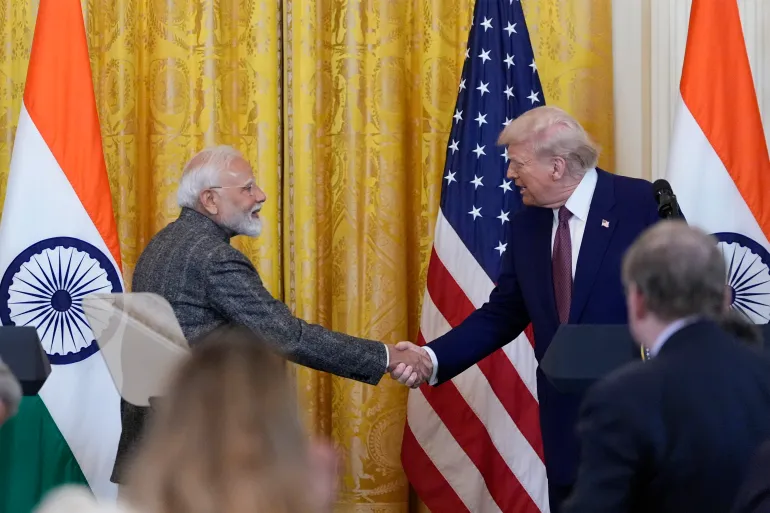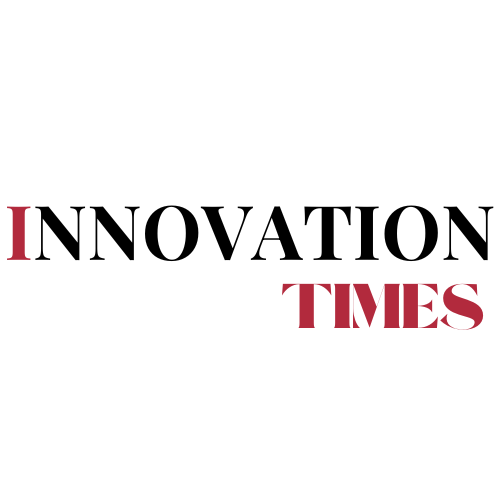Indian Prime Minister Narendra Modi met with U.S. President Donald Trump at the White House on Thursday, marking a significant moment in their diplomatic relationship. The meeting, which was filled with praise and reaffirmations of partnership, aimed at strengthening U.S.-India relations amid global economic and security concerns.
Despite their public display of camaraderie, key issues such as trade tariffs, defense cooperation, and geopolitical tensions were at the center of discussions. Here are the major takeaways from their meeting:
Both leaders emphasized their shared right-wing policies and nationalistic visions. Modi, echoing Trump’s “Make America Great Again” (MAGA) slogan, introduced his own version, “Make India Great Again” (MIGA), highlighting the strategic alignment between the two nations.
The Indian prime minister praised Trump’s commitment to his country, stating, “One thing that I deeply appreciate and I learned from President Trump is that he keeps the national interest supreme.” Modi also compared his Bharatiya Janata Party’s (BJP) ideology to Trump’s “America First” policy, reinforcing their political synergy.
A major topic of discussion was Trump’s push for “reciprocal tariffs,” where the U.S. would match foreign countries’ import taxes on American goods. Trump has previously criticized India for its high tariffs, even calling Modi the “king of tariffs.”

In response, Modi offered trade concessions to soften Trump’s stance, pledging a “new scale and scope” for U.S.-India trade. Both leaders set an ambitious target of doubling bilateral trade to $500 billion by 2030, up from the current $129.2 billion.
Trump also hinted that India would increase its energy imports from the U.S., reducing the trade deficit. Additionally, they discussed expanding partnerships in artificial intelligence, space exploration, and defense technology.
Security was another major focus, with Trump announcing increased U.S. military sales to India worth billions of dollars. The leaders also emphasized joint efforts to combat terrorism, particularly focusing on the extradition of Tahawwur Rana, a Pakistani-Canadian businessman accused of involvement in the 2008 Mumbai attacks.

Trump assured that the U.S. would fully support India’s fight against terrorism, stating, “The United States and India will be working together like never before to confront the threat of radical Islamic terrorism.”
Trump and Modi discussed creating an international trade route to rival China’s Belt and Road Initiative. Trump revealed plans for a major trade corridor connecting India, Israel, Italy, and the United States through ports, railways, and undersea cables.
This plan aligns with the India-Middle East-Europe Economic Corridor (IMEC), a U.S.-facilitated project aimed at boosting trade while reducing China’s influence in global infrastructure. However, its future remains uncertain due to ongoing conflicts in the Middle East.

Although unrelated to U.S.-India relations, Trump was repeatedly asked about his phone conversations with Russian President Vladimir Putin and Ukrainian President Volodymyr Zelenskyy. He suggested that NATO’s expansion was a key reason behind the war, echoing Russian narratives.
Trump claimed that Ukraine’s NATO ambitions triggered Russia’s actions, saying, “Now, Russia’s taken over a pretty big chunk of territory. And they also have said from day one that they cannot have Ukraine be in NATO.”
While Modi remained silent on the topic, his government has maintained close ties with Russia, making this aspect of Trump’s remarks particularly relevant to India’s foreign policy stance.

The meeting reaffirmed strong ties between the U.S. and India, with both leaders emphasizing cooperation on trade, security, and global infrastructure projects. While Trump’s stance on tariffs and trade remains a concern for India, Modi’s strategic concessions and diplomatic alignment with Trump may ease future negotiations.
As both leaders continue their terms in office, the direction of U.S.-India relations will be shaped by these discussions, influencing global trade dynamics and geopolitical strategies.
Stay ahead with the latest news on global innovation, leadership, entrepreneurship, business, and tech. Join us on WhatsApp or Telegram for real-time updates. Have a report or article? Send it to report@theinnovationtimes.com.
Follow us on X (Twitter), Instagram, LinkedIn, Pinterest and Facebook for more insights and trends



